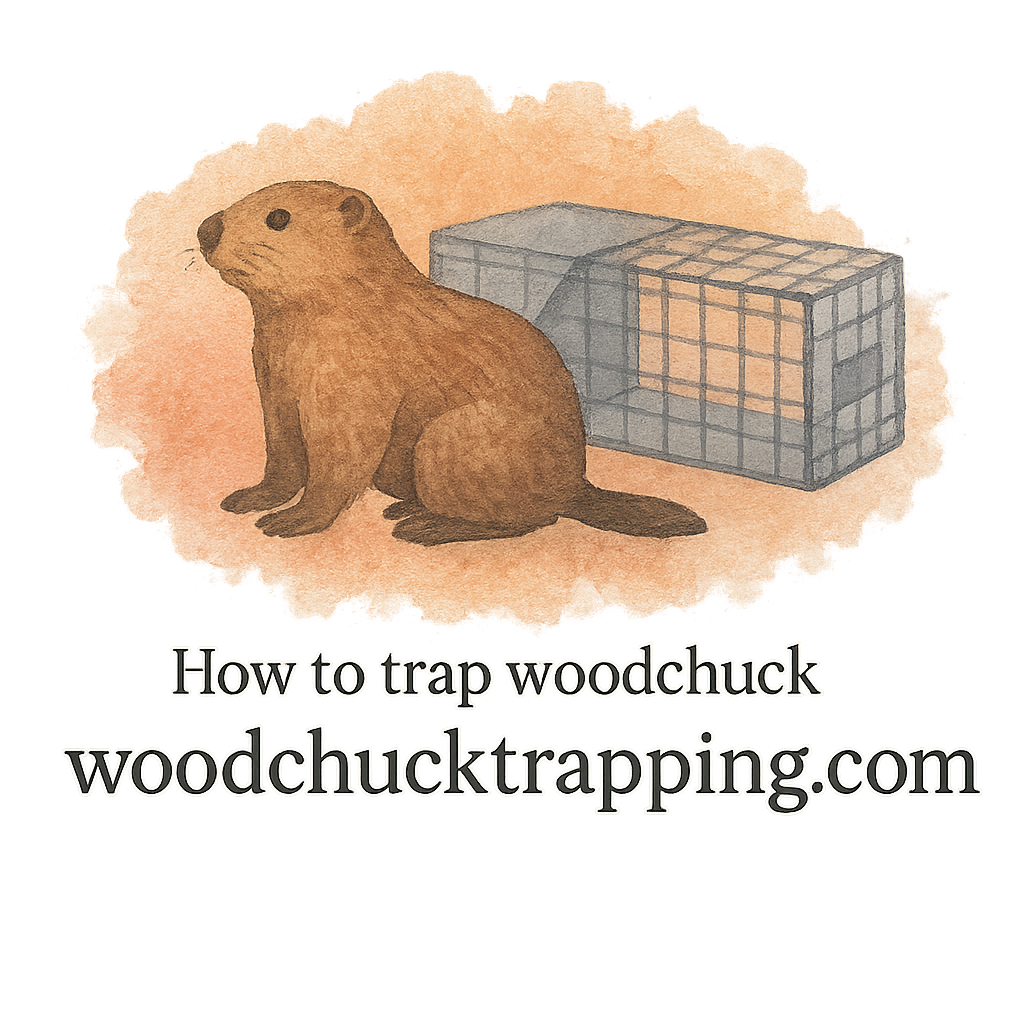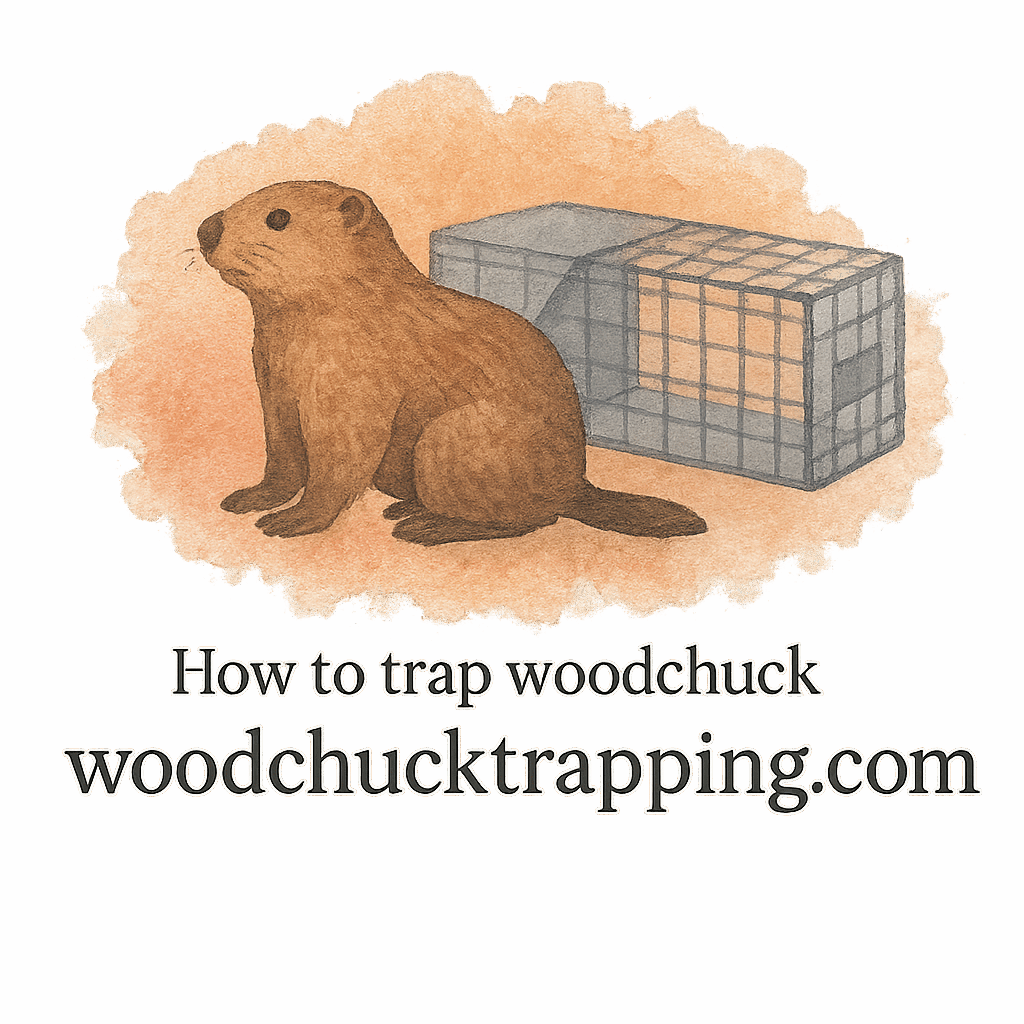Introduction
If you’ve ever walked into your garden only to see leafy greens, beans, or melons half-eaten, there’s a good chance a woodchuck was the culprit. These furry diggers might look harmless, but they can cause significant crop loss. That’s where humane woodchuck trapping techniques come into play. Not only do they protect your harvest, but they also ensure wildlife is treated with respect. In this guide, we’ll cover ten effective and ethical ways trapping methods safeguard crops while minimizing harm.
Understanding the Woodchuck Problem
What Are Woodchucks?
Woodchucks, also known as groundhogs, belong to the marmot family. They’re burrowing animals that love open fields, gardens, and farmlands—making them a direct threat to crops. Learn more about woodchucks and their habits at woodchucktrapping.com.
Why Woodchucks Target Crops
Their diet mainly consists of fresh greens. Unfortunately for gardeners, that means woodchucks naturally gravitate toward vegetables, fruits, and even ornamental plants.
Common Signs of a Woodchuck Infestation
- Large burrows with mounds of soil nearby (see burrow signs here)
- Gnawed plants and disappearing vegetables
- Trails leading from burrows to gardens
The Importance of Humane Woodchuck Trapping
Ethical Wildlife Management
Humane trapping ensures woodchucks are captured without unnecessary suffering. It’s about finding a balance between protecting your crops and respecting wildlife.
Legal Considerations in Trapping
Before setting traps, always check your state’s guidelines. Woodchuck trapping laws and safety tips provide a comprehensive overview of what’s allowed.
10 Ways Humane Trapping Protects Crops
1. Identifying Burrows for Targeted Trapping
The first step is locating active burrows. By targeting these entry points, you prevent widespread damage while reducing wasted effort.
2. Using the Right Bait and Lures
The right bait makes trapping efficient. Fresh vegetables or professional luring methods work best. Choosing the right scent bait increases success rates.
3. Choosing Humane and Compact Traps
Opt for compact traps designed to minimize stress on the animal. Check out equipment reviews for trap gear recommendations.
4. Preventing Excessive Yard Damage
Trapping woodchucks prevents further digging that can ruin lawns, gardens, and foundations. Explore more on yard damage prevention.
5. Minimizing Risks to Non-Target Animals
Using trapping techniques that focus on woodchucks reduces the chance of catching pets or other wildlife.
6. Safe Handling of Trapped Woodchucks
Wearing gloves and following proper handling procedures keeps both you and the animal safe.

7. Relocating Woodchucks Responsibly
After capture, relocating the animal to a suitable area ensures survival while keeping your crops safe. Always handle trapped animals with care.
8. Protecting Crops in Small Yards and Gardens
Even in limited spaces, humane minimal-space trapping can keep your small yard gardens secure.
9. Combining Trapping With Preventive Techniques
Pairing traps with fencing, repellents, or natural deterrents gives long-term protection. Explore prevention and damage control.
10. Long-Term Protection Through Education
Learning how to trap and teaching others ensures communities can manage woodchuck problems ethically.
Essential Equipment for Humane Woodchuck Trapping
Gloves, Tools, and Trap Gear
Having the right tools and trap gear ensures efficiency.
Choosing the Right Trap Size
Too small, and the trap won’t work. Too big, and the woodchuck may escape. Using traps designed for groundhogs is crucial—see more at trapping essentials.
Laws, Safety, and Best Practices
Local Wildlife Regulations
Always check your local rules before trapping. Violations could lead to fines or worse.
Safety Measures for Homeowners
Trapping isn’t just about the animal—it’s about protecting yourself too. Using safety protocols is essential.
Preventive Measures After Trapping
Securing Crop Fields
Install fencing, seal burrows, and keep vegetation trimmed to deter new woodchucks.
Natural Deterrents and Barriers
Using smells or physical barriers discourages re-infestation. Explore more at woodchucktrapping.com/tag/infestation.
Conclusion
Woodchucks can devastate gardens and farms, but humane trapping offers a practical, ethical solution. By using the right traps, lures, and preventive measures, you protect crops while respecting wildlife. Think of humane trapping as both a shield for your harvest and a responsible way to coexist with nature.
FAQs
- What is the most effective bait for trapping woodchucks?
Fresh vegetables and scent lures work best. - Are humane traps safe for pets?
Yes, when set up correctly with humane techniques. - How do I know if a burrow is active?
Look for fresh dirt and signs of recent digging. - Can I trap woodchucks in a small yard?
Absolutely—minimal-space trapping is effective for small yards. - Is relocation legal everywhere?
Check laws and safety guidelines for your area. - What’s the best trap for beginners?
Start with compact traps recommended in equipment reviews. - How do I prevent woodchucks from returning?
Combine trapping with fencing, repellents, and crop protection strategies.

Welcome to the woodchucktrapping.com

